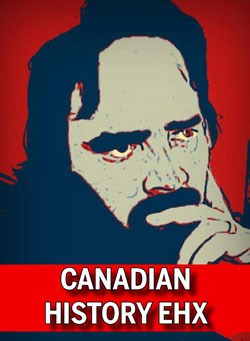By Craig Baird
Take a quick drive around Yorkton and you will find that the community has many streets named after individuals from the community's past. Who were these individuals and what impact did they have on the history of Yorkton?
MacFarline Street: Named in honour of Cosmo MacFarline, who was one of the first settlers to ever come to the district. Arriving in 1882, he served as the first overseer of Yorkton in 1894.
Irwin Street: Named for Henry Irwin, who arrived from Nova Scotia in 1883.
Beck Avenue: Named for Levi Beck, who was known as The Merchant Prince, and came to Yorkton with a yoke of oxen from Portage La Prairie. During his time in the community, he owned a mill, general store, butcher shop, farm business, and auto dealership. He also served as mayor of Yorkton in 1911, completing a term of two years.
Peaker Avenue: Named for Charles Peaker, who served on council for 27 years, and was mayor for three years. Arriving from England in 1888, he was a successful farmer who would go on to operate a line of grain elevators.
Reaman Avenue: Named for Joel Reaman, who arrived in Yorkton in 1887 to homestead. He owned a general store and built the Queen's Hotel. He was also the first postmaster of Yorkton and was elected to the NWT Legislature in 1888. Re-elected in 1892, he became the first cabinet minister of Yorkton,. Unfortunately, he would die that same year.
Betts Avenue: Named for George Betts, who subdivided the land and named the first street after himself.
Collacott Street: Named for Thomas H. Collacott, the very first blacksmith to operate in Yorkton. He also owned a hardware store and served as mayor from 1903 to 1905.
Clark Avenue: Named for Joseph M. Clark, who was well-known in Yorkton during its early years. He was the postmaster from 1902 to 1916, served on town council and was mayor in 1910.
Bailey Drive: Named for H.M. Bailey, a man who served in both the First and Second World Wars. Bailey was the city engineer from 1936 to 1956.
Dracup Avenue: Named for George Dracup, who lived in Yorkton at the turn of the century and fought in the First World War. Dracup was very active in the community, especially in real estate. He enlisted in 1916 and served in the 128th Battalion. He was killed in action on July 28, 1917.
Logan Crescent: Named for James P. Logan, who came to Canada in 1903 and settled in Yorkton. Working as a carpenter, he was known as an artist in his trade. Logan would build his business up to become a million-dollar general contracting business employing 300 people. He was elected to council in 1915 and would serve until 1945, except in 1920 and 1921.
Information for this post comes from Yorkton: York Colony to Treasure Chest City.
Canadian History Ehx is not only a column, but also a podcast that publishes weekly with interesting stories of our great nation. You can learn more about the podcast by visiting http://canadaehx.blogspot.com
If you have any questions or would like Craig to look at something specific from Yorkton's history, e-mail him at crwbaird@gmail.com
I am not a history professor, nor am I a history student. I am simply a man who has a love of Canadian history. Canada's history is a fascinating one. My mission is to not only educate, but to show everyone just how epic Canadian history truly is.
Email: crwbaird@gmail.com. Twitter: @CraigBaird. Facebook: Canadian History Ehx. http://canadaehx.blogspot.ca



